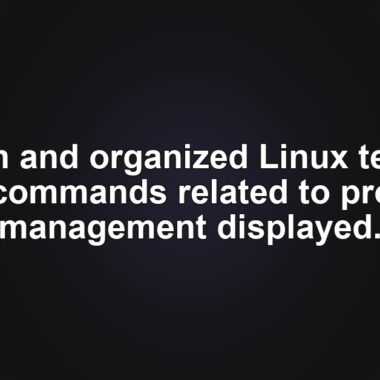How to Run a Python Script on Linux: A Beginner’s Guide
Running a Python script on Linux is a fundamental skill for developers and system administrators. Thanks to its versatility and ease of use, Python is a popular choice for automating tasks, analyzing data, building applications, and managing systems.
The Basics of Running Python Scripts on Linux
Python’s integration with Linux-based systems is seamless, thanks to the availability of interpreters and libraries in Linux repositories. We’ll explain how to run a Python script in your remote server’s Linux command line and address common errors you might encounter.
Prerequisites
Before we begin, ensure you have the following details of your VPS ready:
- Server IP address
- SSH port
- SSH username
- SSH password
If you’re a Hostinger user, you’ll find these details under VPS→Server Details→Manage. Your credentials are located under the SSH access tab.
How to Execute a Python Script in Your Linux VPS Command Line
1. Transfer a Python Script to VPS
To run your Python script, you need to transfer it from your local machine to your VPS. There are several ways to do this, each offering different levels of complexity and security.
Here are some file-transferring methods and protocols:
- Secure Copy Protocol (SCP)
- rsync
- SFTP (SSH File Transfer Protocol)
- Secure Shell (SSH) protocol
Using SCP
SCP relies on SSH for secure data transfer, encrypting both the file and authentication information. Use the following command to copy files:
scp [path to file/folder on your machine] [username@IP address]:[path to desired location on VPS]Using rsync
rsync is an efficient method for syncing files and directories between two locations. To use rsync, ensure it’s installed on your VPS and use the command:
rsync [options] [path to file/folder on your machine] [username@IP address]:[path to desired location on VPS]2. Make Sure Python Is Installed on Your VPS
Most Linux distributions come with Python preinstalled. To check if Python is installed, run the command:
python --version3. Make Your Script Executable
Make your script executable by adding a shebang line at the top:
#!/usr/bin/env python3Use chmod to set execute permissions:
chmod +x [Python file]4. Run the Script and View it in the Terminal
Use the following command to execute your script:
./executable.py5. View Logs
Check system logs for errors or messages generated by the script. Use less or tail commands to view log files in /var/log.
Running a Python Code Interactively
1. Launching Python’s Interactive Mode
Launch Python’s interactive mode by typing Python or Python3 into the terminal.
2. Executing Python Commands Interactively
Enter Python commands directly in interactive mode to see their output immediately.
3. Exiting Interactive Mode
Type exit() or press Ctrl + D on your keyboard to exit interactive mode.
Troubleshooting Common Execution Errors
Permission Denied Error
Use chmod +x [Python file] to grant execute permissions to your script.
No Such File or Directory Error
Ensure you are in the correct directory or provide the full path to the script.
Python Version Compatibility
Specify the desired Python version when running the script.
Interpreter Not Found Error
Install Python using the package manager if not installed.
Ready to get started with your own VPS? Check out Hostinger for reliable and affordable hosting solutions.
Conclusion
Linux is a powerful tool that makes running Python scripts a breeze. Whether for automation, system management, or application development, these steps will help you execute Python code smoothly.
How to Run a Python Script in Linux FAQ
How Do I Run a Python Executable in Linux?
Navigate to the executable’s directory and run it using the ./ prefix followed by the filename.
What’s the Difference Between Running Python Scripts Interactively and From the Command Line?
Interactive mode allows you to execute commands line by line, while command line execution runs the entire script at once.
How Can I Run a Python Script at Scheduled Times on Linux?
Create a cron job to schedule script execution at specific times.
Starter-Pack HTML Section
Esther Kumi
Esther is a copywriter for SaaS and Tech companies. She has a background in engineering and software development. When she’s not writing, she’s conducting creative experiments, inventing systems, writing screenplays, or laughing at her own dad jokes. Follow her on LinkedIn.
👉 Start your website with Hostinger – get fast, secure hosting here 👈
🔗 Read more from MinimaDesk:
- How to Disable xmlrpc.php in WordPress: A Step-by-Step Guide
- The Ultimate Guide to WP-Content: Access, Upload, and Hide Your WordPress Directory
- How Many WordPress Plugins Are Too Many? Optimize Your Site for Success
- Mastering WordPress: Solving Broken Permalinks Effortlessly
🎁 Download free premium WordPress tools from our Starter Tools page.








